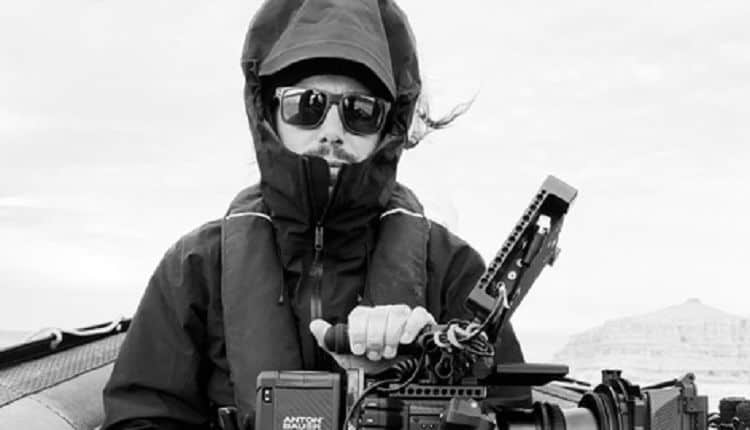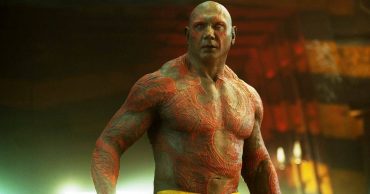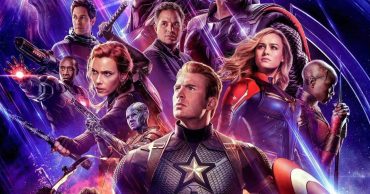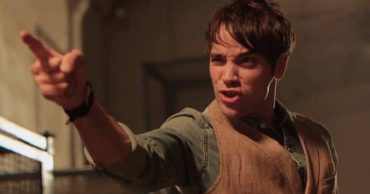
Cinematographer Stuart J. Cameron has working on everything from award-winning short films (Kookie, Latched) to shows such as The Amazing Race Canada and Top Chef Canada. His latest title is the horror film, Making Monsters, written and directed by Justin Harding. In honor of the film’s recent release by Samuel Goldwyn Films, we had Stuart answer the below ten questions about Making Monsters, Derrick Pottle: Keeper of the Flame and much more.
-You have worked on a lot of non-fiction nature focused projects, but your latest title is the scripted horror film, Making Monsters. How did you get connected with this film?
The director and I actually went to high school together and have shot countless projects together. I think our first feature was shot when we were in 14 years old. So we have quite a thick history. I guess his passion is horror, and so the last few things we have collaborated on have been in this genre. Definitely a fun genre to work in, the rules are very different than in the non-fiction nature world, so it is a creative journey I rarely get to take, but enjoy so much.
-I imagine that every project you are on, unexpected challenges arise that force you to change your planned shots. What were those challenges with Making Monsters?
I’ve mentioned this numerous times when asked these types of questions about this film in particular. But the budget on this film was the biggest obstacle that we faced. And as you can imagine, the effect that a limited budget has on every aspect of the film making process is monumental – and although I knew the budget restraints going in, the unexpected part was the daily complication of being at the mercy of the things we couldn’t control, because of the lack of money. Things like the weather, the length of the day, location, equipment and crew shortage are the places we would normally spend money to mitigate their effect on the production, but in this case, they were the things that dictated many of our decisions. To overcome these difficulties, we were able to work in a fluid way to maximize our daylight hours each day, switching scenes last min to match the weather and lighting conditions of scenes already shot in the chronology of the film. It was a really challenging and fun to work this way, and because of everyone’s willingness to adopt this approach we were able to complete the project which is an accomplishment in itself.
-On your IMDB page you have the titles of director of photography, camera operator and cinematographer for different projects? Can you explain the difference between the three?
The reality of this is that a cinematographer is the director of photography on a film. I guess the terms are used interchangeably, but I always reference myself, or an artist who does what I do as a cinematographer, and when I’m talking about their position on the project, I refer to them as the DOP or DP. Weather this is correct or not, I have no idea, but it’s just the way I’ve grown up using the terms, and I guess I feel that a cinematographer could hold different positions on a production but still be a cinematographer, but maybe just be operating for this particular job, who knows. But obviously being a camera operator is a totally different position and it itself is an art form in all genres of film and TV. I think one of the interesting things I’ve learned working in all areas of the industry is that you really begin to understand how specific people’s talents become. Some of the skills are interchangeable and exist in all styles of production, but some of the skills used achieve the same outcome in different styles could not be more different. Expecting a camera operator from the long format world to operate a pedestal camera on a live TV show wouldn’t get you great results as the jobs couldn’t be more different. I think this is what has led me to be a unique kind of cinematographer, and it’s what allows me to do jobs like working on Making Monsters. I’ve done a lot, in a lot of different ways, from assisting in IA, to live TV, shooting docs all over the world, reality shows, running after people in the Amazing Race, loading 1000ft rolls of 35mm in a Panavision Panaflex Millennium XL and lastly standing by a monitor lighting scenes as a cinematographer on commercials and films – all these experiences have given me the perspective that guides my decisions and allows me to function creatively with whatever it is we have to work with.
-Your Royal Canadian Mint commercial has a lot of aerial shots with nature. Where you in a helicopter for those shots? If not, how did you get those?
It’s not rare, but maybe it’s better to say that people don’t shoot like this very often anymore – but it seems like I get jobs that involve helicopters where we end up taking the doors off. I guess the norm these days is to hire a helicopter with a Shot Over or Cineflex system hanging off the front – or even more normal now, a drone. But it seems that I find myself strapped into the side of a Griffen helicopter at the gunners position with the door wide open, or backwards in the front seat of an AStar bolted in backwards with no door more often than I’d like my wife to know. But there is something unique about hand held footage from the air that is different, it has a more human quality to it. I’m quite proud of the stuff we shot for the Canadian Mint, it was all shot hand held on a 200mm lens in -40 degrees without the windchill of the rotor wash that was blasting in through the missing door. Some of the stuff we managed to capture from that vantage point, in that style, has such a distinct feeling to it, so different from the long lens arial shots we normally see, or the hyper smooth wide angle drone footage that we are fed regularly. It’s also quite difficult to find animals like we did, and to photograph them successfully the way we did, all around a great success. Funny little story about that job – we did use drones as well because of costs etc. but I’ve never on any other job had to go retrieve a drone that crashed on another mountain with our helicopter, and I don’t think I’ll ever have that problem ever again.
-What was the most challenging part of filming Derrick Pottle: Keeper of the Flame. How did the weather affect how the project was shot?
Keeper of the Flame was shot during the longest and warmest days in the Canadian Arctic, which are the most hospitable for production, but are arguably not the most beautiful considering how exceptional the changing light is at other times of year in the arctic. This job was an exploration of a character and was approached and filmed as a documentary in an untraditional way. Because of the remoteness of the locations, there is almost no way to travel amongst these places except by ice hardened ship which is how it was done. But each and every days progression was planned based on the ice charts provided by satellite imagery making sure that the ship was not hindered by heavy ice floes. Once the ship navigated the ice, we would arrive at our locations where we were then at the mercy of the wind and sea.
Anything blowing over 15 to 20 knots and the zodiacs would not be able to be lowered into the water, and the sea would be too rough to risk attempting to get off the ship into the zodiac or from the zodiac onto land safely. As long as it wasn’t windy though, we would make our way to land and follow Darrick – and in true documentary form, being that the we had never seen the locations, or had little idea of what to expect when we landed, I came prepared to film whatever we happened across. The most challenging part aside from the locations was the story, finding it, digging for it, knowing what is there but allowing it to unfold in a universally understood way, not telling it from our point of view, but allowing the story to tell itself without tarnishing the truth.
You have become known for your “poetic lighting”. Has this been on purpose?
I wish that was on purpose. I’m not sure how that came to be, it’s brought up quite a lot. I guess what I’ve tried to do on purpose my whole career, and quite unsuccessfully at first, is to find that perfect balance between natural looking lighting and natural light. I’m most satisfied with a project when people are unable to tell if it has been lit or if it’s just natural – the blending of the two, especially when you’re alone or with little help and small lights, is something that took me a long time to get right and it still takes a reserved hand to pull back and let what is naturally happening happen. I find much more value in working a schedule to my advantage than to build a wall of lights to fight it, and at the same time being able to control the natural light, and work it to your advantage without altering its quality, makes it even more satisfying. But in the real world not everything can be shot in those magic moments and we have to stretch them so that scenes, lines and coverage can be done.
You have worked in a lot of different genres from horror to dramas. Is there a genre or type of project you haven’t gotten to work on yet, that you would like to?
I think right now my focus is to build my reel and experience in the commercial world to help prepare me for the next natural progression into long format and episodic TV. I think there is a lot to be learned in the commercial landscape with the variety of lighting, locations, talent, camera movement etc. There is always something new to be learned when you are working with so many different and talented people on such widely different and demanding projects each year. All this leads to an entirely new level of learning, growth and understanding as a cinematographer which only helps to strengthen your abilities and familiarity of your craft.
-You are the Second Unit DP of the upcoming series The North Water. What can you tell us about this show?
This show has the distinct pleasure of being known as the only production to ever be filmed on location North of 82 degrees. Large portions of this show were filmed while standing on floating sea ice 250 nautical miles North of the island of Svalbard in the middle of the Arctic Ocean or while sailing on the picture boat ‘The Activ’ while it traveled between locations, or while anchored in different fjords along the way. No other dramatic production has ever even tried to film in these conditions and quite honestly it was a success only because of a huge abundance of talent and luck. The locations had almost impossible logistics because the sea ice was constantly drifting on currents or being pushed by the wind and we had to have constant watch for extremely dangerous animals like the polar bear who roam freely in this environment. Second unit on this show was far different than what is the norm. For the most part we shot the landscapes which would help set the scene for the series, using a combination of drone and stabilized camera platforms we shot all kinds of imagery including wildlife which would also be used by the VFX department to create vast landscapes full of ships and ice. One of the main characters of the series is the ship that the whale hunters travel on, so it was up to us to film this ship in the various locations from the drone and also more traditional angles. Aside from the landscape and environmental footage, I also joined A unit and either provided a second lens to a scene or stood in for A unit when the terrain was difficult or the use of a 3 axis stabilizer was necessary for the scene. This was a once in a lifetime experience, the actors, the location and the crew were some of the best I’ve had the opportunity to work with. I have yet to see the final outcome, I can hardly wait to see the series when it is finally released.
-You worked on The Amazing Race Canada. How hard is it not being able to plan your locations/lighting and being very spur of the moment with your shots?
I think the Amazing Race is a unique beast of a show. The last thing on your list of things to do as an operator on that show is lighting. There are so many things to consider when doing that job aside from exposure and framing. Imagine running with a camera that weighs 40lbs while trying to survive a 3km sprint following 2 Olympic athletes – we have just jumped into a cab, I’ve rolled 3 ND filters, zoomed out, set focus to 4 feet, flipped on my sun gun and adjusted its intensity as I’ve spun around backwards in the front seat and framed the shot just in time to capture the team yelling their instructions to the driver, my chest pounding and my viewfinder completely fogged up. We not only have to flip colour temperatures, gel our sun guns and roll ND’s while running, but you are the interviewer, building a rapport with the cast to try to illicit a verbal descriptor of what they are doing and feeling as they are doing it in high stress and high steak situations. Without their narration and emotions, the show has nothing, so you are constantly working on both, the shots that tell the story of what’s happening visually, but also asking the questions to get the cast to express their feelings and narrate the show while they move forward. You are also running, so you need to eat and drink whenever possible as some of the episodes take place over multiple days and multiple continents, so you need to make sure you have what you need to keep your body moving. We are also traveling with equipment, so we need carnets and we need our batteries and our media with us, and along with our sound operator we have to manage those resources. We are also in charge of our cast members and their safety, we can not guide them, but we have to make sure we stay with them and document their entire journey. One of the most difficult things to capture in the show is your team arriving to a location because as they say in prep “this show is not all asses and elbows” meaning we have to get ahead of the cast and film them going places, we can’t just film them running from behind. Sometimes there are zone cameras that are waiting at checkpoints, but when you are out in the field alone you, as the camera operator, have to run ahead of your cast members, drop to a knee, frame up a great wide shot of a recognizable landmark or interesting frame and allow your team to run though it and then get up and catch back up to them. You have to do this over and over and over again knowing that maybe none of that effort will ever be seen on screen. It is a thankless job, sleepless nights on airport floors, no bathroom breaks, no craft table, but the experience and the sense of accomplishment is full of endorphins you can’t get any other way. The sense of comradely between crew members is also one of the perks – there is a brotherhood between people who have run the race together, a mutual respect and lifelong relationships are formed. But all that being said, while all that is going on, I still do take time to make sure I have interesting frames that are exposed properly and I try to keep the backgrounds clean and I get lost in moments when the sun is setting in the background while driving through the mountains filming team Giver talking about how they lost they childhood friend, I get lost in the beauty of the story and the image doing this job just like any other.
-Has there been a movie in the last few years that the cinematography has really stuck out to you?
I think one of the most interesting films I’ve seen from a visual concept stand point is Natasha Braier’s work on The Neon Demon – I read a review of the cinematography in this film when it came out and it said something to the effect of ‘the film was painted almost entirely in colour and shadow’ and it couldn’t be any more true. It isn’t a look that is used in storytelling very often if ever, the framing and the use of colour at the time were very bold.
Also, Tree of Life.. not the most recent film.. but the one from 2011… shot by Chivo… that film totally mimics my style of cinematography and my ideals about being ready in the moment to capture the natural beauty and not try to control it or take away from it by adding a heavy hand… there is so much beauty already there, its ignorant to think we can do any better.
 Follow Us
Follow Us




